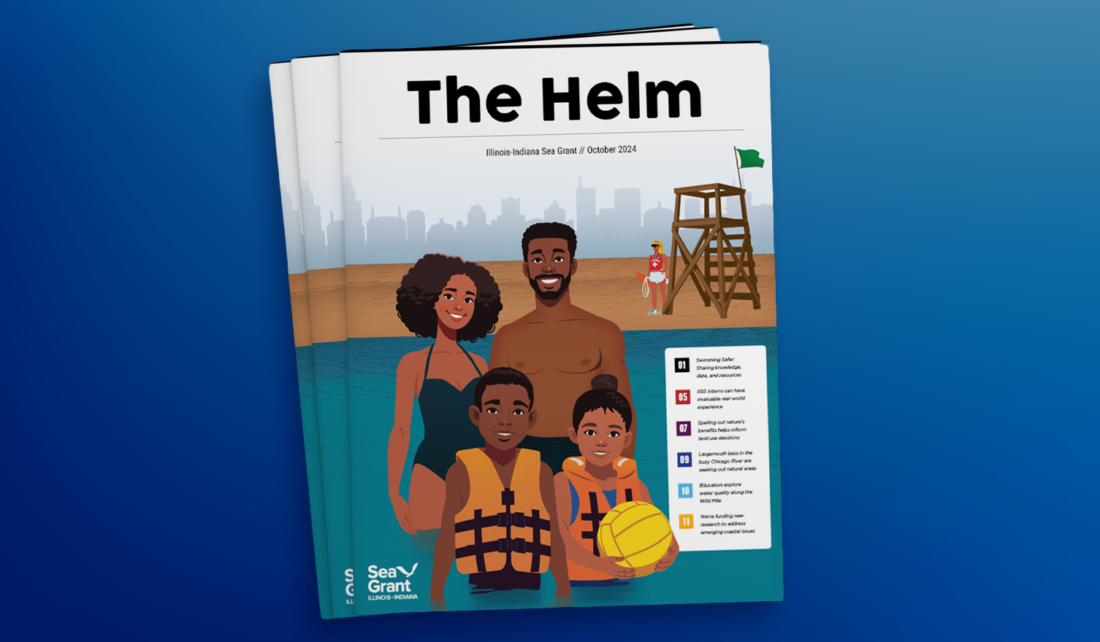
The 2024 issue of Illinois-Indiana Sea Grant’s magazine, The Helm, is now available. This annual publication is a collection of program research, outreach and education success stories, as well as ongoing activities to address coastal concerns. This issue describes IISG-funded research to help reduce drownings in Lake Michigan, especially for Black youth, introduces a community planning approach to assess the value of natural environments, and reflects on our 14-year intern program.
Here are some headlines from this issue:
- Swimming Safer: Sharing knowledge, data, and resources
- IISG interns can have invaluable real-world experiences
- Spelling out nature’s benefits helps inform land use decisions
- Largemouth bass in the busy Chicago River are seeking out natural areas
- We’re funding new research to address emerging coastal issues
___________________________________________________________
Illinois-Indiana Sea Grant is one of 34 Sea Grant programs supported by the National Oceanic and Atmospheric Administration in coastal and Great Lakes states that encourage the wise stewardship of our marine resources through research, education, outreach and technology transfer. In partnership with the University of Illinois Extension, and Purdue University Forestry and Natural Resources, Illinois-Indiana Sea Grant brings science together with communities for solutions that work.

